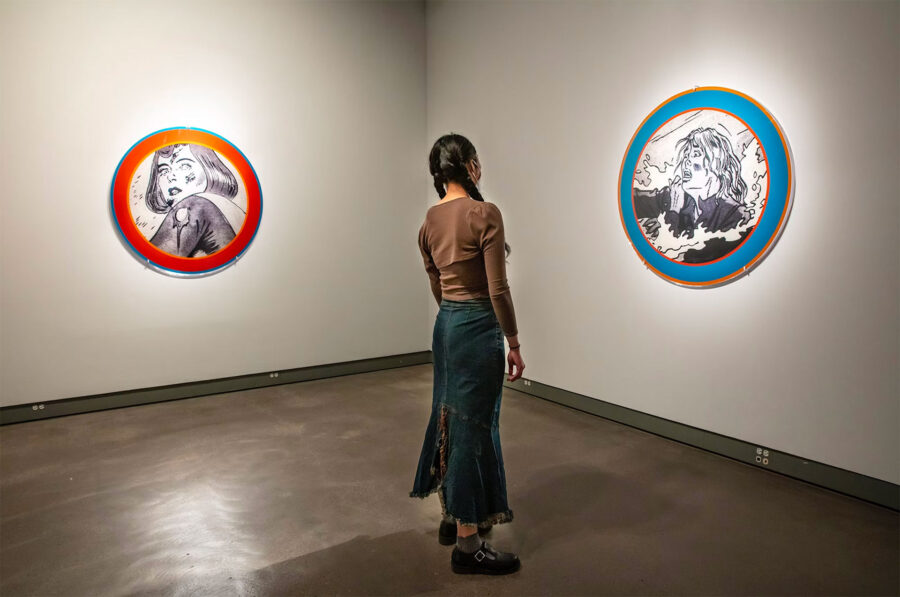Dara Birnbaum, the visionary video artist renowned for her fearless appropriation and subversion of television tropes, passed away on May 2, 2025 at age 78, leaving behind a transformative body of work that forever reshaped the dialogue between art and mass media. Over a career spanning half a century, Birnbaum probed the ideological underpinnings of broadcast culture through incisive remixes of commercial imagery, embedding a potent feminist critique within her pulsating montages. From her iconic Technology/Transformation: Wonder Woman piece to her multilayered installations at major institutions, Birnbaum’s practice challenged viewers to question the very mechanics of media representation and power.
Dara Birnbaum (1946–2025) revolutionized video art by dismantling and reconstructing television imagery to reveal the ideological structures beneath mass entertainment. Trained initially in architecture and painting, she embraced the Portapak camera in the mid‑1970s to forge a new visual vocabulary that fused rapid‑fire editing with feminist inquiry. Birnbaum’s works, such as Kiss The Girls: Make Them Cry and Pop‑Pop Video, transformed banal broadcast clips into incisive cultural critiques, earning her retrospectives at venues including Belvedere Palace in Vienna and Fondazione Prada in Milan. Her legacy lives on in contemporary media art, where her strategies of appropriation and repetition continue to inform dialogues around representation, gender, and technology.
Early Life and Artistic Genesis
Dara Birnbaum was born on October 29, 1946 in New York City, growing up amid the fledgling television culture that would later become her primary subject. She earned a Bachelor of Arts in architecture from Carnegie Mellon University in 1969, where she developed an analytical eye for structural systems that would inform her later video works. After relocating to San Francisco to study painting at the San Francisco Art Institute, she encountered the Portapak camera, igniting her passion for the moving image. Returning to New York in 1976, Birnbaum joined a dynamic community of experimental artists who were redefining video as a critical tool for cultural commentary.

Pioneering Video Interventions
By the late 1970s, Birnbaum began deconstructing television programs, focusing on the gestures and framing devices that conveyed ideological messages. In Control Piece and Mirroring, she used reflection and fragmentation to expose the viewer’s role in image consumption. Her breakthrough came with Technology/Transformation: Wonder Woman (1978–79), in which she looped and dissected clips of the television hero to critique gender roles encoded in popular media. This work, distributed by Electronic Arts Intermix, stands as a seminal exploration of appropriation art and remains widely studied in media art programs.
Feminist Critique and Mass Media Subversion
Birnbaum’s practice was deeply informed by feminist theory, using repetition and montage to unravel the constructed female archetypes perpetuated by television commercials and series. In Kiss The Girls: Make Them Cry (1979), she threaded together corporate adverts featuring women to highlight the emotional labor imposed by consumer culture. Similarly, PM Magazine/Acid Rock (1982) juxtaposed a corporate magazine show with rock music to critique both commercialism and the narrow representation of women in broadcast journalism. Through these works, Birnbaum revealed how broadcast networks normalized patriarchal values, urging viewers to recognize and resist these subliminal messages.
Iconic Works and Their Impact
Over her career, Birnbaum produced numerous landmark pieces that continue to resonate. Local TV News Analysis (1980) dissected news framing conventions over an hour‑long video, laying bare editorial biases. Pop‑Pop Video (1980) critiqued the seductive language of advertising through rapid‑fire edits of fragrance commercials and glamour shots. In General Hospital/Olympic Women Speed Skating (1980), she linked melodramatic soap opera visuals with athletic performance to explore the conflation of spectacle and entertainment. These works cemented her reputation as a relentless interrogator of television’s visual grammar.
Exhibitions and Retrospectives
Birnbaum’s trailblazing career was honored by major institutions worldwide. In 2024, the Belvedere Palace in Vienna hosted a comprehensive retrospective featuring her six‑channel installation Bruckner: Symphonie Nr. 5 B‑Dur. In 2023, Fondazione Prada in Milan and Prada Aoyama in Tokyo presented dual exhibitions examining her early video works and later installations. Additional retrospectives were held at the Hessel Museum of Art in New York (2022) and the Miller Institute for Contemporary Art in Pittsburgh (2022). Documenta 7, 8, and 9 also featured her contributions, underscoring her central role in international contemporary art discourse.
Legacy and Influence
Birnbaum’s methodological approach to appropriation and montage inspired generations of media artists and critics to interrogate the power structures embedded in visual culture. Contemporary video artists continue to employ her tactics of repetition and disruption to comment on digital media’s algorithmic biases. Her work is widely referenced in academic texts on feminist media studies and included in university curricula for its pioneering critique of corporate broadcast systems. Birnbaum also mentored emerging artists through lectures and workshops, fostering a community dedicated to critical video practice.
Remembering Dara Birnbaum
The passing of Dara Birnbaum marks the end of an era for video art, yet her radical vision endures in every pixelated critique of mass media today. Fellow artists, curators, and scholars mourn her loss while celebrating a legacy defined by fearless innovation and incisive cultural commentary. As institutions mount new exhibitions and younger practitioners revisit her methodologies, Birnbaum’s work will continue to challenge and inspire future generations to question how images shape our collective consciousness.
#DaraBirnbaum #VideoArtPioneer #MediaCritique #FeministArt #MassMediaDeconstruction #ArtHistory #ContemporaryArt #VisualCulture #MediaArtLegacy #InnovativeArt









